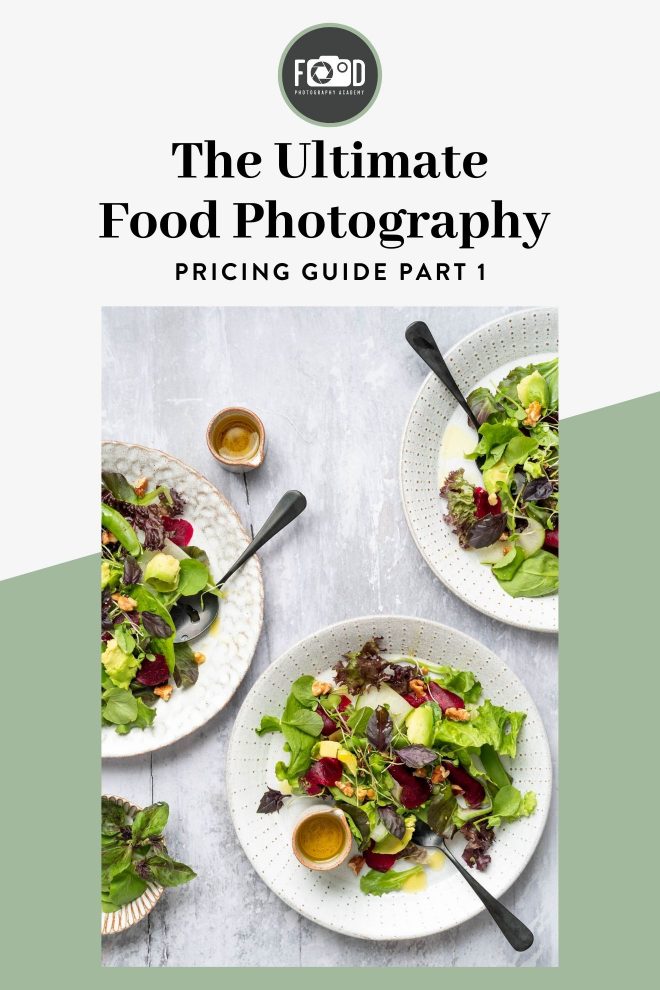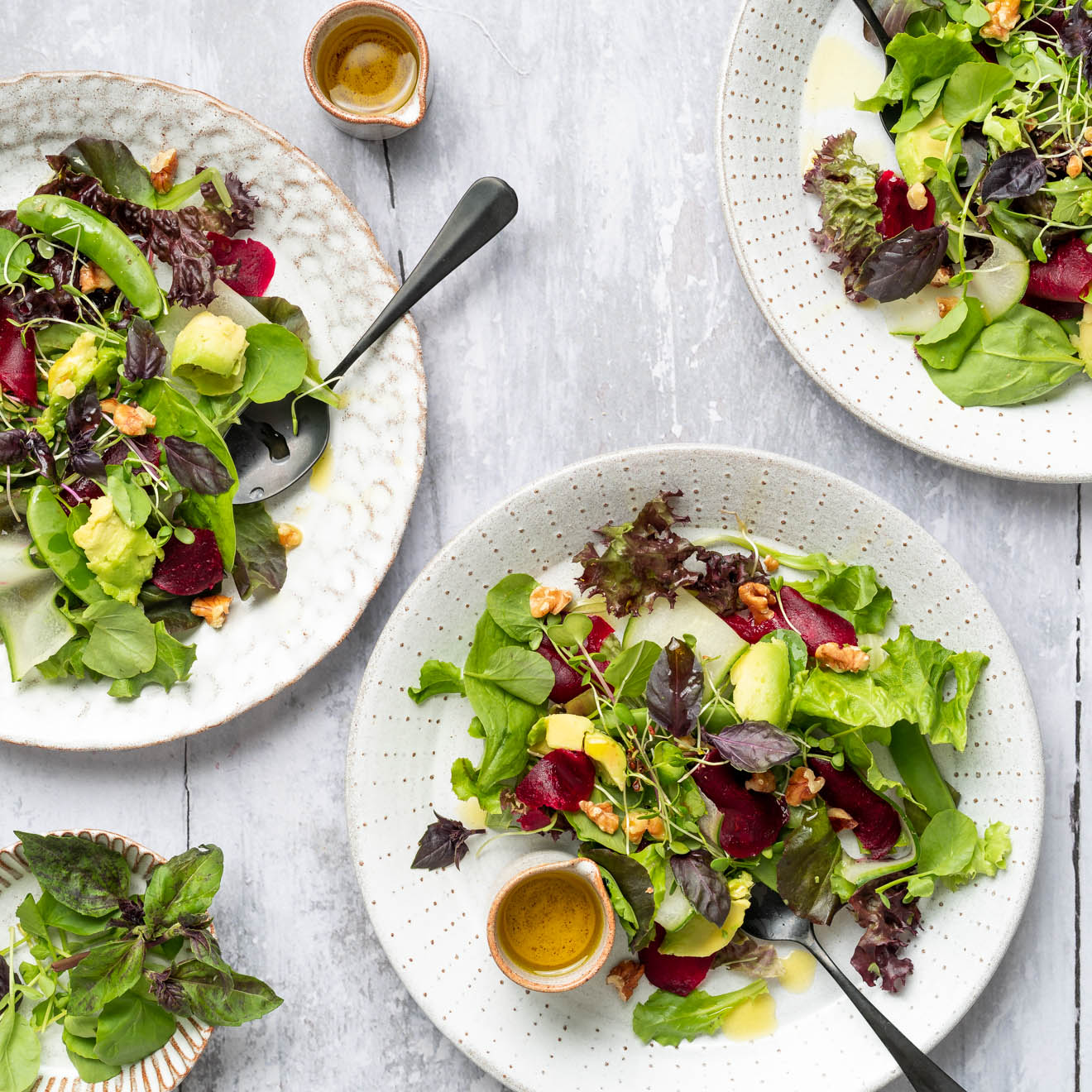Food Photography Pricing Guide – Part 1: All the basics
One of the most challenging parts of starting a food photography business is figuring out how to price your work. I’m often asked, “How much should I charge?” Or, “Help! Someone contacted me about a shoot and I don’t know what to tell them about my rates.” This 3-part food photography pricing guide will cover everything you need to know to figure out your pricing.

Together, we’ll cover principles that will help you to create a pricing structure that truly works for you and sustains your business! In part one, we’re going to cover all the basics of pricing to get you started:
First things first: set up your business
Before we even get into our food photography pricing guide, there are a few items you’ll want to make sure you’ve accomplished first. For help with all of the details for turning your food photography passion into a business, check out my free Business Blueprint guide to get started today!
In brief, you need to make sure you’ve gotten your business licensed, set up a bank account, started bookkeeping, and sorted out your insurance. This way, you’ll be ready to accept and track any payments you receive!
Getting all of these details into place will help you know what some of your monthly and annual expenses are, which is one of the factors that will help you decide how to price your services. After the basic practicalities are set up and running smoothly, you want to create your portfolio.
Figure out how much you want and need to make
Now, the next step in the food photography pricing guide is to consider how much you want to make from your business in a year. Furthermore, you’ll also need to consider how much you need to make for your business to be sustainable. Here’s how to do that…
First: Is this going to be your full-time job or a side gig?
Ask yourself some questions: How many hours do you want to work each month? How many jobs do you want per month?
If your food photography is going to be your only, or main, source of income, then your business needs to be able to cover all your monthly expenses (and ideally have some money left over after that!) If it’s going to be a side gig, calculate how much money you expect to make monthly outside of your food photography business to help you set an overall income goal.
Next, look at your expenses:
What are your expenses? I recommend making a spreadsheet to track them all. Don’t forget all the things you set up for your business that we mentioned previously, whether one-time costs or recurring expenses.
Keep in mind things like setting money aside for taxes, rent and utilities (especially for studio space), editing software, Google apps for business, your website host, subcontracting fees, advertising, and other monthly expenses. Also consider your personal expenses: food costs, health insurance, a car payment, home rent/mortgage, etc. These expenses are non-negotiable and need to be paid no matter what job you have.
For a helpful guide to everything you need to consider, check out my Business Blueprint Guide!
Once you have totaled all of your business and personal expenses, you’ll know the bare minimum amount you need to make each month to live comfortably and keep your business running. This is the baseline of your food photography pricing guide.
Of course, if you have other income streams outside of your food photography, calculate how much of your expenses will be covered by that work and how much more you’ll need to make from your photography business.
Now, evaluate…
Given how many hours you want to work/time you want to put into your business, is it realistic that you’ll be able to pay all your expenses? Will you have any money left over to put in savings?
Also consider: Are you happy with the amount of money you’re making now? How much do you want to make per month?
After assessing these things, you may need to ask yourself if you need to work more. This is where you can make the call about if you can go full-time into food photography or if you need to hold on to your other job for now.
This is a crucial part of a food photography pricing guide because once you decide on how much you want and need to make each month, you’ll have a better idea of how to price your services.
For example, let’s say you want to make $3,000 per month or $36,000 per year. You also think you can complete about 3 food photography jobs per month. $3,000 per month divided by 3 jobs per month = $1,000 per job. So, your goal should be to make about $1,000 per project if you’re doing 3 projects a month.
Of course, there’s wiggle room with these calculations. You may work on a much larger project where you make all $3,000 (or more). Or, you could work on 5-6 smaller projects that come out to about $3,000. It’s really up to you! But knowing the average amount you want to receive per project will help guide you as you price your services. It will also help you know which jobs to say “yes” or “no” to.
It’s also important to know your value. We’ll talk about expertise in the next section of the food photography pricing guide, but it’s important not to undervalue your time and expertise either.
Keep in mind your level of expertise and clientele
Now that you have an idea of how much you need to make per month and how much you want to work each month, consider whether these numbers work with your experience level and client needs.
Ask yourself:
- Where do you think you’re at with your food photography expertise level?
- What makes your work stand out?
- Who are your ideal clients?
- What do you think is realistic for your dream clients to pay?
- Does where you’re at match what your dream clients want?
You may have a goal of doing photography for cookbook shoots, but maybe your experience level isn’t quite there yet. Maybe brand photos for social media are a better niche for you right now. That’s okay! One isn’t better than the other, but it’s important to be honest with yourself. These two types of food photography have very different budgets/pricing and require different skills. So, how much you can charge for your services also depends on your experience level and what type of clientele you’re working with.
We’ll dive more into different client types in Part 2 of this food photography pricing guide, so stay tuned!
Food photography pricing means looking at the big picture
When you’re creating your own food photography pricing guide to determine your rates, the big picture matters. All of the items and areas we’ve mentioned so far, from expenses and desired income to experience and target clientele, work together to influence your pricing.
Ultimately, that’s why this is a food photography pricing guide and not a formula. There’s no one way to price your services or specific rules to follow. You need to consider all of these factors individually, and then look at them as a whole to get a general idea for how to price your work.
It’s fluid and it does change! That’s totally normal! The goal is to give you a general idea of what to expect so that you can make informed decisions as you negotiate project contracts, make budgets, and advertise your skills.
In the next post on our food photography pricing guide, we’ll dive deeper into different ways to price your photography (i.e. per photo, per day, etc.) and pricing considerations and methods for different types of photoshoots.
In the meantime, my free Business Blueprint Guide will help you to get your successful food photography business up and running!
See you next time!

How do you calculate your creative fee? Does this take into account the amount of hours put into the project and based solely off hourly rate? I’m still trying to work my creative fee out. I have a different license fee I give per image of usage for typically 1 year usage, but was curious about the creative fee part.